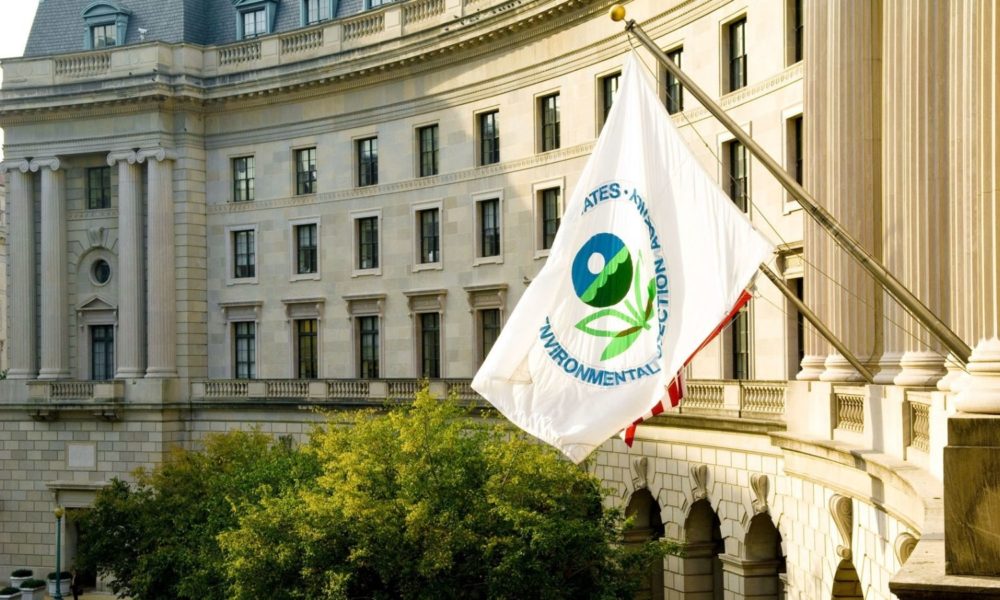Yesterday, EPA announced a new roster of 47 Science Advisory Board (SAB) members which includes qualified experts, including a third who identify as people of color, with a rich assortment of backgrounds. The majority of members (roughly three-quarters) are university researchers, with three affiliated with consulting firms, five from government agencies or Tribes, and four from nonprofit organizations. After four years of watching the norms of science advisory structures eroded and undermined, especially at the EPA, it is especially encouraging to see this roster that will serve as the scientific and technical compass that EPA needs.
This committee has a very important role to play as EPA works to address major environmental and public health challenges. A quick glance at the EPA’s spring regulatory agenda reveals a long list of actions, many of which will benefit from SAB review, including setting a maximum contaminant level for PFOA and PFOS, creating emissions standards at sterilizing facilities emitting ethylene oxide that are health-protective, and redefining what constitutes “waters of the United States.”
Science advisory capacity shaping up across the agency
The SAB announcement comes on the heels of EPA’s June appointment of seven members to its Clean Air Scientific Advisory Committee (CASAC) and appointments to its Science Advisory Committee on Chemicals (SACC).
At CASAC, the executive committee will now be made up of a majority of female scientists, with three people of color. The chair of the committee, Dr. Lianne Sheppard, not only has extensive credentials and qualifications, but she is experienced in how CASAC’s advisory process works with EPA—a skill that will be handy as the agency goes back to the drawing board on its particulate matter NAAQS standards. EPA also announced it will reconvene its particulate matter subcommittee, which you may remember was disbanded by former EPA Administrator Wheeler despite its vital role in providing expertise to the agency. These are necessary actions to ensure that EPA receives the level of scientific review and public input that important rules, like the PM2.5 standard, deserve.
With regard to SACC, we joined the Environmental Defense Fund’s comments last year urging the agency not to appoint a list of individuals with clear conflicts of interest. While the Biden administration did not accept new nominations, they did heed our ask when composing the committee. New SACC membership consists of qualified individuals, the majority of whom are independent, university researchers. Just last month we heard about whistleblowers from within the TSCA program reporting blatant sidelining of agency scientists and misrepresentation or manipulation of the science in order to downplay risks of chemicals during the Trump Administration. This was just one of more than 200 attacks on science we tracked at the Union of Concerned Scientists. It is critical that EPA abide by its own scientific integrity policy and utilize SACC to conduct peer reviews of TSCA determinations while being transparent about its processes with the public.
Diversity in science advice is critical
By law, federal advisory committees are required to be fair and balanced, but that definition has traditionally been narrowly focused on balanced expertise and viewpoints, rather than membership inclusive and representative of different races, ethnicities, genders, backgrounds, institutions, regions, and experience.
Changing these practices has been a long time coming. On April 28th, UCS led a group of 16 scientific, professional, and academic organizations, including the American Public Health Association (APHA), the American Geophysical Union (AGU), Ciencia Puerto Rico, 500 Women Scientists, and the American Association of University Professors, that sent a letter to 24 federal science agencies and departments, including EPA, in support of diversifying the science advisory committees that support policy decisions across the government. That letter followed from the Biden administration’s January 27 “Memorandum on Restoring Trust in Government Through Scientific Integrity and Evidence-Based Policymaking.” In its response to our letter, EPA affirmed that strengthened diversity on science committees will “lead to more comprehensive and equitable decision making at the federal level.” While the shifts in membership that EPA has instituted are a good first step, there’s more the agency can do to ensure that diverse membership is baked into committee practices. This includes:
- Updating committee charters to include more explicit and inclusive language on qualifications for members. These qualifications should not necessarily be limited to individuals with terminal degrees in a particular field, tenured academics, or individuals solely within STEM fields. Scientific expertise could include individuals with experience living, working, and conducting community science in environmental justice communities, and/or holders of Traditional Ecological Knowledge (TEK), for example.
- Changing committee membership selection processes to include a range of backgrounds and experiences within the committee’s definition of “balance,” and explicitly asking for demographic information on committee nomination forms.
- Designing incentive structures, such as compensation for committee meeting time, to recruit a broader pool of the best candidates, including qualified early-career scientists, and reduce barriers to participation for open committee positions.
- Including in efforts to solicit committee nominations outreach to:
- Academic institutions that serve historically underrepresented communities; and
- Administrators and principal investigators of existing agency programs, and their networks, which fund and support the advancement of underrepresented scientists
There should also be more accountability in this undertaking. Data collection and analyses on these efforts would help the administration and agencies understand outcomes from changes in the process of empaneling advisory committees, and develop best practices and further ways to improve. Transparency in the process and methodologies of this change in policy and practice would allow researchers and the public to understand whether committees are becoming more inclusive and therefore more effective.
Continued transparency and enhanced accessibility are imperative
President Biden’s January memo on scientific integrity in decisionmaking required each agency to review its science advisory committees, including the processes by which members were appointed and the makeup of current committees. Hopefully, this review and the administration’s stated commitment to independent science advice will push the agency not just to correct misguided policies from the Trump administration but to address issues that existed before, like lack of transparency around vetting procedures for conflicts of interest, and regular, public disclosure of conflicts of interest and recusals from scientific discussions.
As these committees begin scheduling public meetings, EPA should provide ample notice and make relevant documents public well ahead of meetings so that members of the public may join and provide comments. EPA should also make its meeting agendas, minutes, rosters, and recusal statements available for each meeting. The agency has even shown that it’s possible to do this in different languages to be more accessible to a wider audience, as it did with a July meeting of its Board of Scientific Counselors.
Most importantly, it’s time for these advisory committees to get to work. We look forward to seeing EPA pave the way for independent science advice to thrive.

